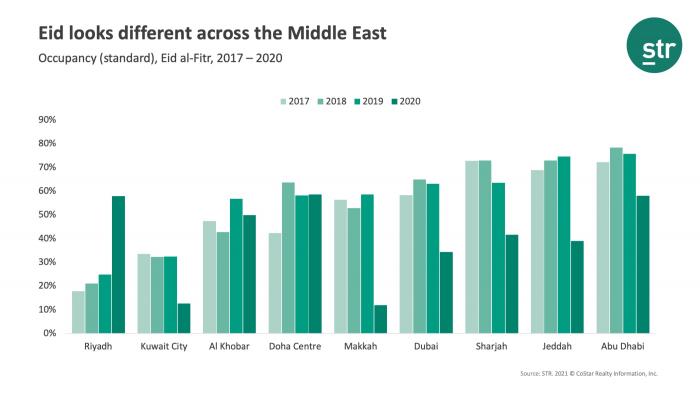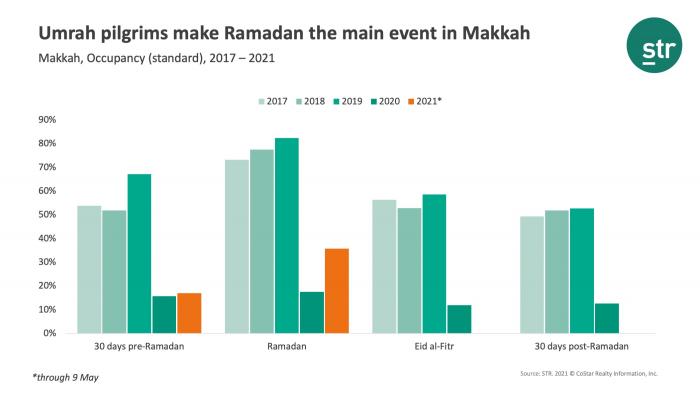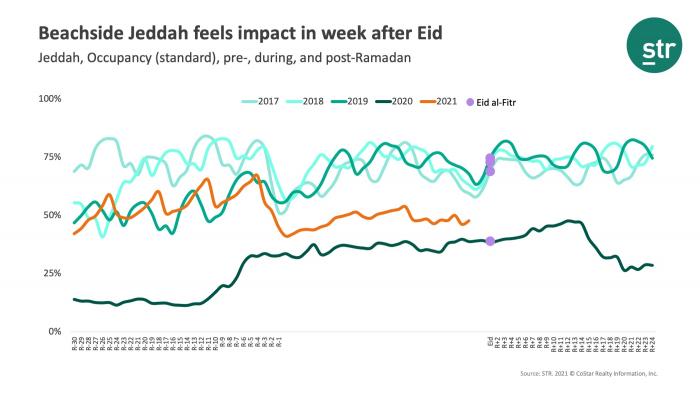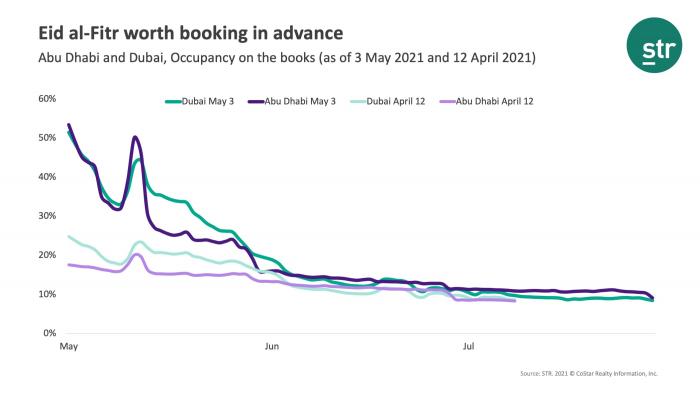On Tuesday, 11 May, Muslims across the Middle East set their eyes to the sky in search of the crescent moon that would signal the end of Ramadan, the holy month of prayer and fasting. The moon, however, was not sighted, and the Supreme Court of Saudi Arabia announced Eid al-Fitr, or the breaking of the fast and end of Ramadan, will instead fall on Thursday, 13 May.
Eid al-Fitr, or “Little Eid”, officially lasts one day, although many countries offer paid holidays for private sector and federal employees for three to five days after the end of Ramadan. While both business and leisure travel slow significantly during Ramadan, Eid al-Fitr offers Muslims an opportunity to celebrate the end of the Holy Month with friends and family, and hotel occupancy rises as leisure travel restarts.
Eid al-Fitr may look somewhat different this year, but as Middle Eastern nations continue to roll out vaccines to residents, and domestic travel and travel corridors slowly resume, the holiday may be a bright spot for some markets.
Not all markets celebrate equally
In normal times, Eid al-Fitr occupancy varies depending on market drivers. Leisure markets like Jeddah, Dubai, and Sharjah, report high occupancies on the holiday, while business-based capital markets like Riyadh, Kuwait City, and Doha Centre host fewer travelers in comparison.



